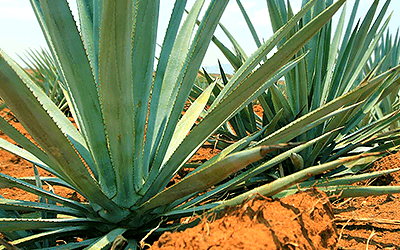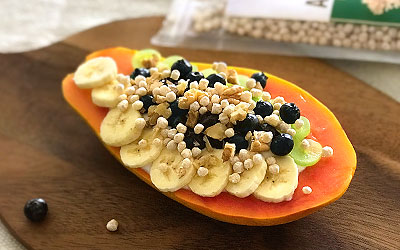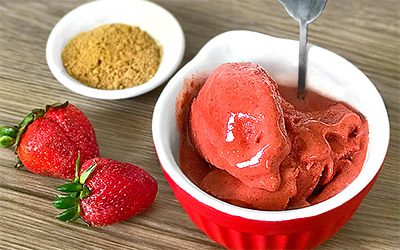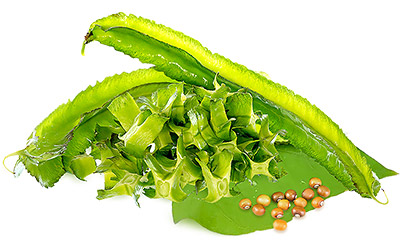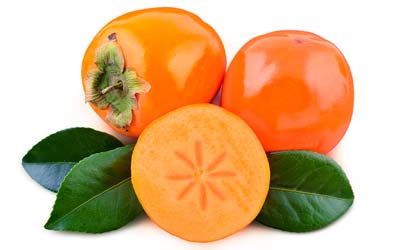The agave plant is also known as century plant and maguey plant, among many other names. It is native to the arid, subtropical areas of Central America, Mexico, and southern parts of North America, where it is not only popularly used to produce syrup and tequila, but also has a long history of medicinal uses, some of which have been validated by modern science.
Agave Medicinal Properties
- Medicinal action Anti-inflammatory
- Key constituents steroidal sapogenins (hecogenin and tigogenin), inulin
- Ways to use Hot infusions/tisanes, Powder, Syrup
- Medicinal rating (3) Reasonably useful plant
- Safety ranking Use with caution
Health Benefits of Agave
Agave's medicinal value lies in its anti-inflammatory and antimicrobial properties. While it is widely used in traditional Mexican medicine for various ailments, scientific studies have shown agave's effectiveness for:
Reducing inflammation and swelling. Agave's properties has proven useful for treating skin problems and superficial wounds, preventing infections, and aiding wound healing.
Alleviating gastritis and ulcers. Because of its demulcent, anti-inflammatory properties, the gelatinous sap of agave has been shown useful for gastritis and stomach ulcers.
Additionally, agave's benefits include prebiotic effects on the intestinal flora, which makes it a good supplement for people with digestive issues and gastrointestinal infections.
The agave plant itself has been found to have hypoglycemic properties, which may be useful for people with diabetes and hyperglycemia. However, in spite of its popularity, there is very little scientific evidence supporting the consumption of agave nectar as a sugar replacement for weight loss diets.
In India, the juice of agave leaves is traditionally used to treat warts and ulcers.
How It Works
The main bioactive compounds in the agave plant are steroidal sapogenins (mainly hecogenin and tigogenin), as well as inulin.
Scientific studies have shown that hecogenin possesses potent gastroprotective and anti-inflammatory effects.
Moreover, hecogenin has also been shown to act as a mediator of ATP-sensitive potassium channel (K ATP channel), which is directly involved in the metabolism of the pancreatic cells that produce insulin. While further research is necessary, this pharmacological action reveals that agave truly possesses hypoglycemic properties.
On the other side, tigogenin has important antimicrobial and anti-inflammatory properties, and it is partly responsible for the demulcent, anti-ulcer activities of agave leaves and juice. This saponin compound has also been shown to inhibit cholesterol absorption, which may be useful for improving fat metabolism.
Agave leaves contain significant amounts of inulin, which is a non-digestible type of sugar (a fructan) with prebiotic activity. Inulin, also contained in other herbs, like yacon and chicory, does not get absorbed in the blood. Instead, it stays and ferments in the lower part of the gut, where it enhances the growth of good bacteria. There is evidence that the consumption of inulin may improve glucose metabolism and body weight as well as reduce fat mass development.
Agave Side Effects
Agave nectar as a sweetener is generally considered safe in moderate amounts. Processed forms of agave, such as commercial agave nectar, may be counterproductive for treating diabetes. Too much of it - or any other source of sugars - may lead to metabolic syndrome over a long period of time.
Agave Cautions
Inulin can produce gastrointestinal discomfort in people with fructose malabsorption and intolerance. It also can aggravate the symptoms of irritable bowel syndrome (IBS). Those following a low FODMAP diet are advised to reduce the intake of foods and supplements containing inulin.
Additionally, agave juice can cause contact dermatitis, so it should not be applied topically.

How to Consume Agave
- Edible parts Flowers, Leaves, Nectar
- Edible uses Sweetener
- Taste Sweet
Agave benefits are popularly obtained from natural forms of the plant, which can be consumed orally or applied topically.
Natural Forms
Infusion. The dried leaves of the plant can be brewed into agave tea in order to extract its anti-inflammatory and gastroprotective properties. The infusion can also be applied topically to sanitize superficial wounds and skin irritations.
Powder. The sap of agave is reduced and transformed into a fine powder that is used as a natural sweetener in beverages and desserts. Agave powder contains prebiotic fiber, which is often consumed to improve digestive complaints.
Nectar. Also known as agave syrup, it is a sweet liquid extracted from the roots of the plant. It has culinary uses and is also popularly advertised for diabetes management and weight loss diets; however, agave nectar is high in fructose, and it should be used in moderation.
Growing
- Life cycle Perennial
- Harvested parts Flowers, Leaves
- Light requirements Full sun
- Soil Light (sandy)
- Growing habitat Arid or desert regions, Tropical rainforests
The agave plant is a hardy perennial that grows well in a variety of conditions; however, it has certain requirements in order to thrive.
Growing guidelines
Agave plants are grown from seeds, suckers, or bulbs.
Full sun is a requirement for growing agave; however, these plants tolerate part shade locations better than other succulents.
The agave plant prefers shallow soil with good drainage. Natural rainfall is enough water to keep the agave plant alive and healthy; however, if rainfall is not plentiful, initial watering will be needed.
Agave leaves are harvested after the plant's third year, when they have reached at least three feet (1 m) in length.
Detailed information about growing agave can be found in the herb garden.
Additional Information
- Other uses Alcohol, Paper, Fiber
Plant Biology
The native American agave (Agave americana) survives the best in arid, subtropical regions. It often grows as tall as 6 feet (183 cm). Presented in a massive rosette shape, its smooth, fibrous leaves are gray-blue to blue-green with spines at their tips and margins; the older leaves tend to bend down.
In spite of being called "century plant," agave lives for 10 to 25 years before it produces a magnificent flower stalk that can be 15 feet (4.5 m) tall. After that, the original plant dies, but it is replaced by small offshoots around the base.
Classification
Agave (Agave americana) belongs to the large Asparagaceae family, composed entirely of flowering plants with asparagus being one of the most economically important species. Previously considered as a separated family, the subfamily Agavoideae comprises more than 200 species, including all species of agave, many of them currently used as raw material in several biotechnological processes.
Subspecies and Varieties of Agave
Agave americana is divided into two subspecies: subsp. americana and subsp. protamericana. The former has three varieties: var. americana, var. expansa, and var. picta. However, there is still some debate about the classification of these plants. There are six recognized cultivars, which differ in the markings on their leaves.
There are over 100 species of agave, but the most commonly grown include: Agave americana, Agave angustifolia, Agave tequilana, Agave attenuata, and Agave parviflora - all containing the sweet, fructose-rich nectar. Agave americana is favored for its syrup, Agave tequilana gives its flavor to the worldwide famous Mexican alcoholic beverage, and Agave sisalana is preferred for fiber production.
Historical Information
Archeological findings suggest that roasted agave fiber quids have been chewed by indigenous inhabitants of Central America and southern areas of North America for over 9,000 years as a basic form of nutrition. The roasted leaf bases and the heart of blue agave were called by the Aztecs "mexcally," later evolving into "mezcal" or "mescal," which nowadays is used to identify the distilled beverage derived from the blue agave plant.
It is thought that Spanish and Portuguese merchants began trading the agave plant during theirs travels to the New World and introduced it to Europe as an ornamental species during the 19th century. Agave collectors' favorite place for buying and trading the species was "hacienda El Mirador" in Veracruz, México, from where many indigenous plants were shipped to European importers.
SINCE AGAVE IS A DESERT PLANT AND GROWS WHERE RESOURCES ARE SCARCE, IT HAS BEEN AN IMPORTANT SOURCE OF FOOD FOR INDIGENOUS PEOPLE FOR MILLENNIA.
Economic Data
The agave plant has long been a source of food for the peoples in its native lands. It is also a significant fiber crop in India for dry land farmers. Agave cultivation has been calculated to become profitable after four years, producing a margin of about $2,000 USD per hectare, though this depends on where it is cultivated and the state of the current market. Demand for agave may increase as natural sweeteners gain more traction and research on agave's viability as a biofuel continues. The plant is also very important in the tequila industry.
Other Uses
Alcoholic beverages. The leaves of blue agave are the main ingredient of two traditional Mexican alcoholic beverages, tequila and mezcal.
Gardening. Agave is also a very popular ornamental plant, and many people cultivate it solely to enjoy its physical appearance.
Blue agave (Agave tequilana) is used to produce tequila.
Fiber. The agave plant produces a white or yellow fiber that is used by native communities to make fishing nets, twine, ropes, rugs, brushes, and the like. The leftover parts of the leaves can be made into paper.
Fuel. Promising studies suggest that agave may be a potential source of ethanol and biofuel.
Sources
- Agaves of Continental North America, p. 25
- Critical Reviews in Food Science and Nutrition, Fructose Malabsorption and Intolerance: Effects of Fructose with and without Simultaneous Glucose Ingestion, 2011
- Current Bioactive Compounds, Agave (Agave spp.) and its Traditional Products as a Source of Bioactive Compounds, 2012
- Diabetes, Diabetes and insulin secretion: the ATP-sensitive K+ channel (K ATP) connection, 2005
- European Journal of Pharmacology, Effects of hecogenin and its possible mechanism of action on experimental models of gastric ulcer in mice, 2012
- Planta Medica, Anti-inflammatory activity of aqueous extracts and steroidal sapogenins of Agave americana, 1997
- Recent Patents on Biotechnology, Agaves as a Raw Material: Recent Technologies and Applications, 2009
- Tamil Nadu Agricultural University, Crop Production: Fibre Crops – Agave
- Tequila: A Natural and Cultural History, pp. 7-8
- Texas A&M Agrilife Extension, Century Plant, Maguey, Flowering Aloe, Spiked Aloe, American Aloe, Agave americana
- The British Journal of Nutrition, Physiological effects of dietary fructans extracted from Agave tequilana Gto. and Dasylirion spp., 2008
- The Journal of Nutrition, Inulin and Oligofructose: What Are They?
- University of Arizona, Agave Americana
- USDA Nutrient Database, Basic Report: 35192, Agave, raw (Southwest) | Basic Report: 19912, Sweetener, syrup, agave
- Journal of Medicinal Food, Effects of agave nectar versus sucrose on weight gain, adiposity, blood glucose, insulin, and lipid responses in mice, 2014


